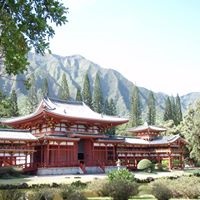What lake in Oregon was created about 7,000 years ago by the eruption of Mount Mazama?
Crater Lake is a caldera lake in south-central Oregon in the western United States. It is the main feature of Crater Lake National Park and is famous for its deep blue color and water clarity. The lake partly fills a nearly 2,148-foot (655 m)-deep caldera that was formed around 7,700 (± 150) years ago by the collapse of the volcano Mount Mazama. There are no rivers flowing into or out of the lake; the evaporation is compensated for by rain and snowfall at a rate such that the total amount of water is replaced every 250 years. With a depth of 1,949 feet (594 m), the lake is the deepest in the United States. In the world, it ranks ninth for maximum depth, and third for mean (average) depth.
In June 1853, John Wesley Hillman became the first non-Native American explorer to report sighting the lake he named the "Deep Blue Lake." The lake was renamed at least three times, as Blue Lake, Lake Majesty, and finally Crater Lake.
Some hydrothermal activity remains along the lake floor, suggesting that at some time in the future Mazama may erupt once again.
Due to several unique factors, mainly that the lake has no inlets or tributaries, the waters of Crater Lake are some of the purest in the world because of the absence of pollutants. Clarity readings have consistently been in the high-30 meter to mid-20 meter (80 to 115-foot) range, which is very clear for any natural body of water. In 1997, scientists recorded a record clarity of 53.3 m (175 ft).
More Info:
en.m.wikipedia.org









